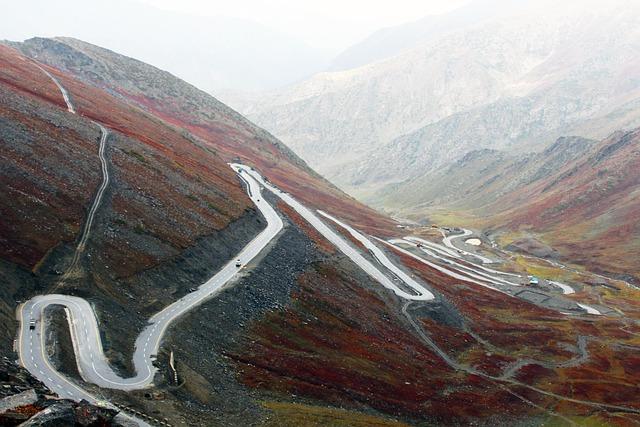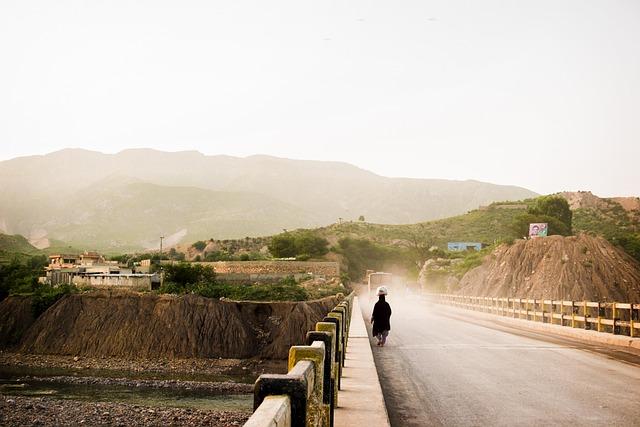Exploring the Dynamics of Immigration in Pakistan Today
In a world increasingly shaped by the ebb and flow of human movement, Pakistan stands at a pivotal crossroads of immigration, weaving a complex tapestry of narratives that reflect both its rich history and its evolving identity. As geopolitical shifts, economic opportunities, and social challenges closely intertwine, the dynamics of migration into and out of Pakistan have become a vital lens through which to examine not only the nation’s current reality but also its future trajectory. This article delves into the multifaceted dimensions of immigration in Pakistan today, unveiling the motivations that drive individuals across borders and the myriad impacts they leave behind. From the bustling streets of urban centers to the quiet corners of rural landscapes, the influx and outflow of people resonate with stories of hope, resilience, and transformation. Join us as we navigate this intricate landscape, shedding light on the experiences that shape a nation amidst a backdrop of global change.
Shifting Tides Understanding the Current Landscape of Immigration in Pakistan
The landscape of immigration in Pakistan is shaped by a multitude of factors, each contributing to a dynamic milieu where cultural, economic, and social threads intertwine. In recent years, the rise of globalization has intensified cross-border movements, turning Pakistan into both a source and destination for migrants. Individuals seeking better opportunities, fleeing conflict, or pursuing education have become increasingly common. This shift is evident in urban areas, particularly in major cities like Karachi and Lahore, where the influx of immigrants has revitalized local economies but also strained resources and infrastructure.
Moreover, government policies play a pivotal role in shaping the immigration framework. Initiatives aimed at bolstering the economy through skilled migrants have emerged, reflecting an evolving attitude towards immigration. The establishment of visa programs and other incentives is designed to attract talent from around the globe, fostering a competitive environment. In contrast, regional challenges, such as the ongoing crisis in Afghanistan, have led to an influx of refugees, pressing the need for comprehensive strategies that address humanitarian concerns while balancing national interests.
| Factors Influencing Immigration | Description |
|---|---|
| Economic Opportunities | Desire for better job prospects and living standards. |
| Education | Pursuit of quality education and professional development. |
| Political Stability | Influence of regional conflicts prompting migration. |
| Social Networks | Established communities aiding new arrivals and integration. |

Cultural Intersections The Impact of Immigrant Communities on Society
The fabric of Pakistani society is woven together by the vibrant threads of immigrant communities, contributing dynamic cultures that redefine identity and social norms. These groups introduce a rich mosaic of traditions, languages, and cuisines, enriching the local life and fostering a dialogue of cultural exchange. Noteworthy impacts include:
- Enhanced Culinary Diversity: The integration of various culinary traditions has transformed local gastronomies, introducing fusion restaurants and food fests celebrating global flavors.
- Language and Arts: Immigrant communities have bolstered artistic expressions through literature, music, and theater, often blending their heritage with Pakistani nuances.
- Socioeconomic Contributions: These communities are instrumental in local economies, establishing businesses and entrepreneurship that create jobs and stimulate growth.
In recent years, the blending of different cultural practices has also given rise to new festivals and communal events where Pakistani and immigrant traditions unite, providing shared spaces for celebration. This not only enhances social cohesion but also nurtures understanding and acceptance among diverse populations. For instance, joint cultural programs and fairs help foster a sense of community while promoting inclusivity. Below is a table illustrating some prominent cultural festivals that reflect this community synergy:
| Festival Name | Originating Community | Key Features |
|---|---|---|
| Eid-ul-Fitr | Muslim Immigrants | Feasting, charity, cultural performances |
| Diwali | Hindu Communities | Lights, fireworks, traditional dances |
| Chinese New Year | Chinese Immigrants | Parades, lion dances, food stalls |

Policy Pathways Evaluating Immigration Laws and Their Implications
The evolution of immigration laws in Pakistan reflects a complex interplay of social, economic, and political factors. Various policies have been implemented to manage both legal and illegal immigration, responding to domestic needs while also addressing international obligations. The implications of such laws can be far-reaching, influencing aspects like
national security,
economic growth, and
cultural integration. For instance, the recent amendments aimed at welcoming skilled migrants highlight a strategic focus on bolstering the workforce, while simultaneously enforcing stricter regulations on undocumented immigrants illustrates a balancing act between compassion and control.
To better understand the local impacts of these regulations, consider the following dimensions of the policy landscape:
- Economic Integration: Policies that promote the participation of immigrants in the labor market can lead to a more dynamic economy.
- Social Cohesion: Initiatives aimed at fostering inclusivity among different cultural groups can help mitigate social tensions.
- Regulatory Challenges: Stricter enforcement mechanisms may inadvertently push migration into illicit channels, complicating management efforts.
| Policy Focus | Short-Term Effects | Long-Term Effects |
|---|---|---|
| Skilled Migration | Increased workforce diversification | Enhanced innovation and productivity |
| Asylum Seekers | Immediate humanitarian support | Cultural diversification |
| Border Enforcement | Reduced illegal immigration | Potential rise in smuggling networks |

Future Visions Recommendations for a Cohesive Immigration Strategy in Pakistan
To foster a more integrated and effective immigration framework in Pakistan, it is imperative to adopt a multifaceted approach that prioritizes inclusivity and adaptability. Key recommendations include:
- Establishing a National Immigration Policy: A clear, comprehensive, and streamlined policy that addresses various immigration aspects—refugees, skilled labor, and family reunification—will facilitate better management and oversight.
- Developing Regional Liaison Offices: Local offices dedicated to immigration services can ensure accessibility and responsiveness to the unique challenges faced by various provinces.
- Utilizing Technology for Data Management: Implementing advanced data tracking systems will enhance the governance of immigration flows and help in addressing potential challenges proactively.
Moreover, collaboration with international organizations and engagement with the diaspora can prove beneficial in shaping a progressive outlook on immigration. Additional strategies should include:
- Public Awareness Campaigns: Increasing public understanding of the benefits of immigration can help mitigate social tensions, fostering a more welcoming environment.
- Skills Development Programs: Investing in training initiatives for immigrants can facilitate their integration into the workforce, thereby maximizing their contributions to the economy.
- Establishing Advisory Committees: Forming committees composed of stakeholders, including immigrants and local communities, can ensure diverse perspectives are incorporated in policy-making.
Wrapping Up
As we reflect on the intricate tapestry of immigration in Pakistan today, it becomes evident that the narratives woven into this evolving landscape are as diverse as the individuals who shape it. From the bustling streets of Karachi to the serene valleys of Gilgit-Baltistan, the stories of newcomers and longtime residents alike converge, painting a multifaceted picture of resilience, adaptation, and cultural exchange.
The dynamics of immigration are not merely statistics or policy debates; they are the living histories of families, aspirations, and communities that challenge and enrich the very fabric of society. As Pakistan continues to navigate the complexities of globalization, it is essential to foster an environment that embraces this diversity while addressing the needs and concerns that accompany it.
In understanding the challenges and opportunities that lie ahead, we are reminded that the essence of cultural progress is rooted in dialogue, empathy, and collaboration. To explore the dynamics of immigration is to embark on a journey that not only reveals the socio-economic influences at play but also honors the humanity in every story. As we close this chapter, may we strive to cultivate a future where every voice is heard, every experience valued, and the spirit of unity remains unwavering amidst the rich mosaic that is Pakistan.



